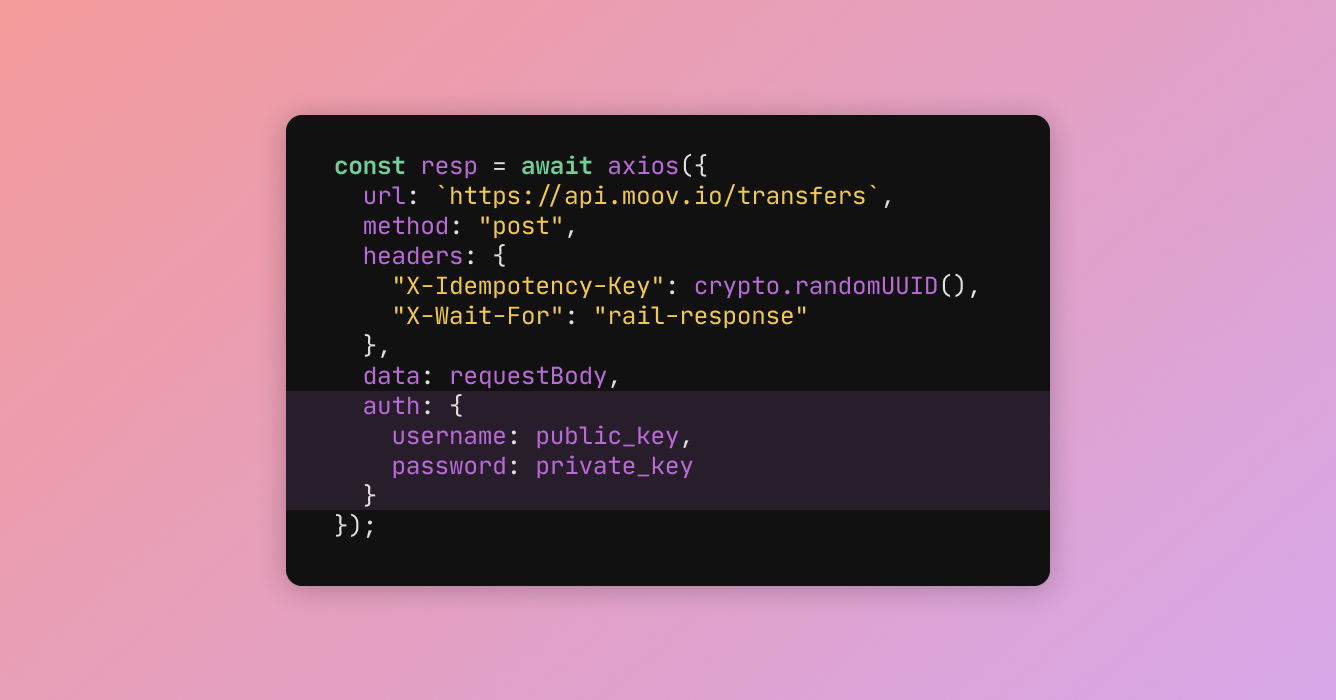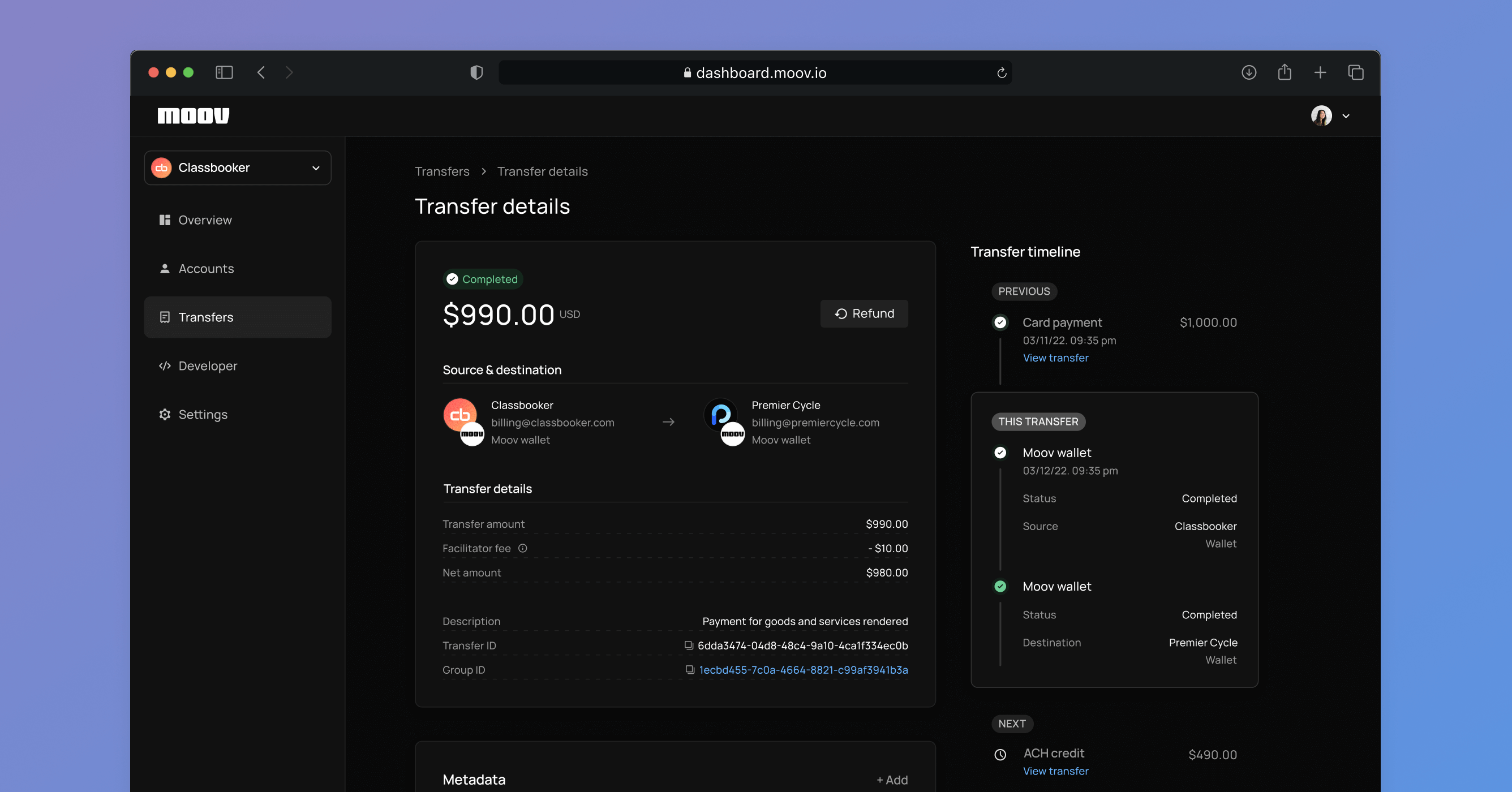Faster searching in Moov Dashboard
Dashboard improvements
We’ve made several improvements to the Moov Dashboard for a cleaner, faster user experience:
- Improved the loading and search speed for accounts
- Simplified verification statuses (so it’s easier to tell whether any action is needed on your part)
- Enhanced our autofill address input field by adding support for apartments and suites
Disputes
We are continuing to improve how Moov handles disputes, with the most recent changes being:
- GET transfer model now returns the
disputedAmount - Support for MasterCard disputes
Card statement descriptors
You can now include more information in statement descriptors and receive descriptor information from the transfers API. Specifically:
dynamicDescriptorandstatementDescriptorcharacter limit increased to 22 characters- GET transfer response now returns the
dynamicDescriptor
Transfer errors
We investigated and addressed a bug on transfer error responses.


